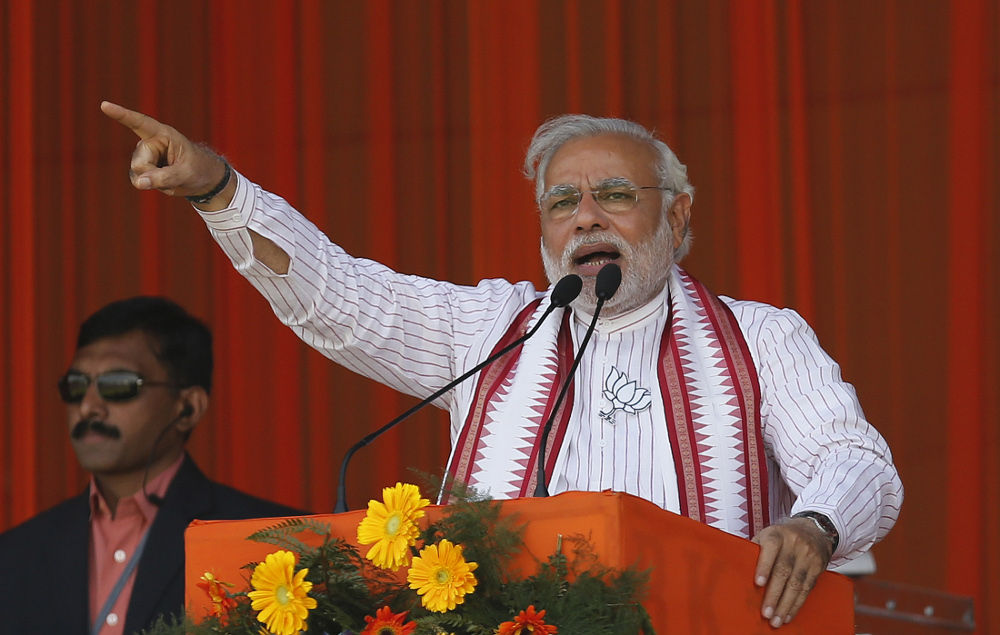Billions of rupees has been spent over decades on India’s sanitation programmes, yet half of the country’s population still battles disease and a myriad other problems brought on by a lack of toilets.
Large numbers of Indians, especially women, have paid a high price for the slow pace of change when it comes to improving India’s sanitation.
Disease and even death are all too common consequences of poor toilet habits in India’s villages, where over 70% of the population still defecate behind bushes, in open fields, on the roadside or along railway tracks.
Human faeces contaminate crops, food, drinking water in wells and ponds. The lack of hand washing among children helps the spread of diseases.
The impoverished village of Mator in the northern state of Uttar Pradesh, less than 100km away from the Indian capital, is a microcosm of what is wrong with India’s attempts to bring better sanitation to the nation.
The village has an estimated population of 5 000, and barely a sixth of the households have a flush toilet or any other form of latrine. For defecation, villagers use fields across a busy highway
“My 6-year-old son Arun was hit by a truck on the highway when he was walking back home from the fields in the morning,” says Radha Devi (36), a farm worker’s wife. The boy died on the way to hospital.
That was five years ago. The mother of three says that they hastely got a loan to build a toilet because they “couldn’t bare to see any more tragedies”.
Mator residents say the state government announced plans to build toilets in the village some five years ago, but the funds were never released and nobody knows what happened to the scheme. There has been no help from the voluntary sector either.
No government official could be reached for comment on Mator’s stalled sanitation programme.
Mindsets are hard to shift
Villagers, mostly farm workers or daily-wage workers, say they are too poor to foot the bill for toilets that could cost anything from 40 000 (R7 210) to 100 000 (R18 002) rupees.
Across India, poor people find it difficult to build toilets and maintain them. And sometimes, when they do, old habits are hard to shift. Often after it is built, a toilet is used as a storage unit for fodder or other items.
A survey by the Research Institute for Compassionate Economics in five northern Indian states – including Uttar Pradesh – showed that in at least 40% of households with a newly-built toilet, a member of the family was still defecating in the open.
Women in Mator say they feel insecure and troubled about having to go to the fields, particularly after sunset, and particularly in the monsoon when the ground is waterlogged.
Two cousins allegedly raped and hanged from a tree in Uttar Pradesh’s Badayun district earlier this year, were attacked after they had stepped out of their homes to relieve themselves.
“It is not safe, particularly for women. I have four young daughters and I am worried until they return,” Mator resident Prakashi says.
Half of the population has no access to toilets
About 47% of schools in India do not have separate toilets for girls, increasing their chances of dropping out as they reach puberty, according to the Annual Status of Education Report 2013.
Open defecation leading to infection and diarrhoea is, according to the United Nations Children’s Fund (Unicef), one of the main reasons why almost half of Indian children suffer from malnutrition.
In the middle of the houses in Mator village is an open space with a makeshift toilet – a pit surrounded by bricks, covered by a rag. Women use the pit to urinate. Even though it poses hygiene problems, they say they have little option.
“Farmers object to our using the periphery of fields for defecation. Some have put up barbed wires as fences, and order us to go away. Other open areas have been encroached. What option do the poor have – where do we go?” wage labourer Vijender Singh asks.
Shripal (62) on the other hand has a toilet but does not use it. “The womenfolk and children use it since they have problems going outdoors. I have been going out in the open for years. I’m not accustomed to using toilets.”
 India’s Prime Minister Narendra Modi has flagged toilets as one of the most crucial issues facing the nation. (Reuters)
India’s Prime Minister Narendra Modi has flagged toilets as one of the most crucial issues facing the nation. (Reuters)
Government’s figures estimate that over three billion rupees has been spent between 1986 and 2012 on sanitation programmes in India, and over 106 million toilets have been built in this period by the government alone.
But, according to the 2011 Census, half of India’s population of 1.2 billion still do not have access to toilets.
On August 15 – in his first Independence Day speech – Prime Minister Narendra Modi flagged toilets as one of the most crucial issues facing the nation.
Toilets are more important than temples, the leader of the Hindu nationalist Bharatiya Janata Party said. The Modi government has set a goal of ending open defecation in the country by 2019. With villages like Mator to be found in every part of this vast country, it seems an ambitious target. – Sapa